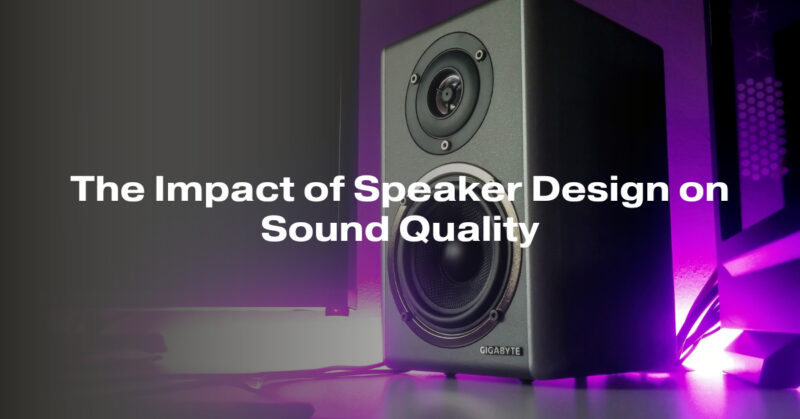Speaker design plays a significant role in determining the sound quality of audio systems. Several key factors in speaker design directly influence how sound is produced and transmitted to your ears. Here’s an exploration of the impact of speaker design on sound quality:
1. Speaker Driver Type:
- Dynamic Drivers: Most common in speakers, dynamic drivers use a diaphragm (usually made of paper, plastic, or metal) attached to a coil of wire in a magnetic field to produce sound. The size, material, and design of the driver influence the speaker’s frequency response and efficiency.
- Planar Magnetic Drivers: These drivers use a flat, lightweight diaphragm with conductive traces in a magnetic field. They often provide greater accuracy and detail in the midrange and high frequencies.
2. Speaker Size:
- The size of a speaker’s driver(s) affects its ability to reproduce low-frequency sounds. Larger drivers generally produce deeper bass, but smaller drivers can excel in midrange and high-frequency reproduction.
3. Cabinet Design:
- The speaker’s cabinet, or enclosure, significantly impacts sound quality. Proper cabinet design minimizes resonances and vibrations that can color the sound. Common cabinet types include:
- Sealed Enclosures: Provide precise and tight bass response but may require larger drivers for deep bass.
- Ported Enclosures: Offer deeper bass extension but require careful tuning to avoid port noise and maintain accuracy.
- Transmission Line Enclosures: Use a long internal path to enhance bass response while minimizing port noise.
4. Crossover Network:
- Speakers with multiple drivers use a crossover network to divide the audio signal into frequency bands sent to the appropriate driver. The design and quality of the crossover impact the speaker’s ability to blend drivers seamlessly and produce a balanced sound.
5. Driver Materials:
- The materials used for the diaphragm, voice coil, and magnet in speaker drivers affect sound quality. High-quality materials can reduce distortion and improve accuracy.
6. Sensitivity and Efficiency:
- Sensitivity measures how efficiently a speaker converts electrical power into sound. Higher sensitivity speakers require less power to produce the same volume, making them suitable for low-power amplifiers. Efficiency impacts a speaker’s ability to play loudly without distortion.
7. Tweeter Design:
- Tweeters handle high-frequency sounds and come in various designs, including dome, cone, and ribbon tweeters. The choice of tweeter impacts the speaker’s ability to reproduce high-frequency details and clarity.
8. Impedance and Compatibility:
- The impedance of a speaker (measured in ohms) affects its compatibility with amplifiers. Ensuring that your speaker’s impedance matches your amplifier’s output is essential for optimal performance.
9. Room Acoustics:
- The speaker’s design should take into account the room in which it will be placed. Room acoustics, such as wall reflections and resonances, can impact sound quality. Proper speaker placement and room treatment can help mitigate these effects.
10. Engineering and Craftsmanship: – Attention to detail in speaker design, manufacturing, and assembly can result in a higher-quality product. Precision engineering and quality control contribute to a speaker’s overall performance.
11. Listening Preferences: – Speaker design should align with your listening preferences. Some speakers emphasize accuracy and neutrality, while others add coloration for a specific sound signature.
In conclusion, speaker design is a complex interplay of engineering, materials, and craftsmanship that directly influences sound quality. The choice of driver type, cabinet design, materials, and overall construction can determine a speaker’s ability to reproduce sound accurately and faithfully. When selecting speakers for your audio system, consider your listening preferences, room acoustics, and budget, and prioritize high-quality design and engineering for the best sound quality.


